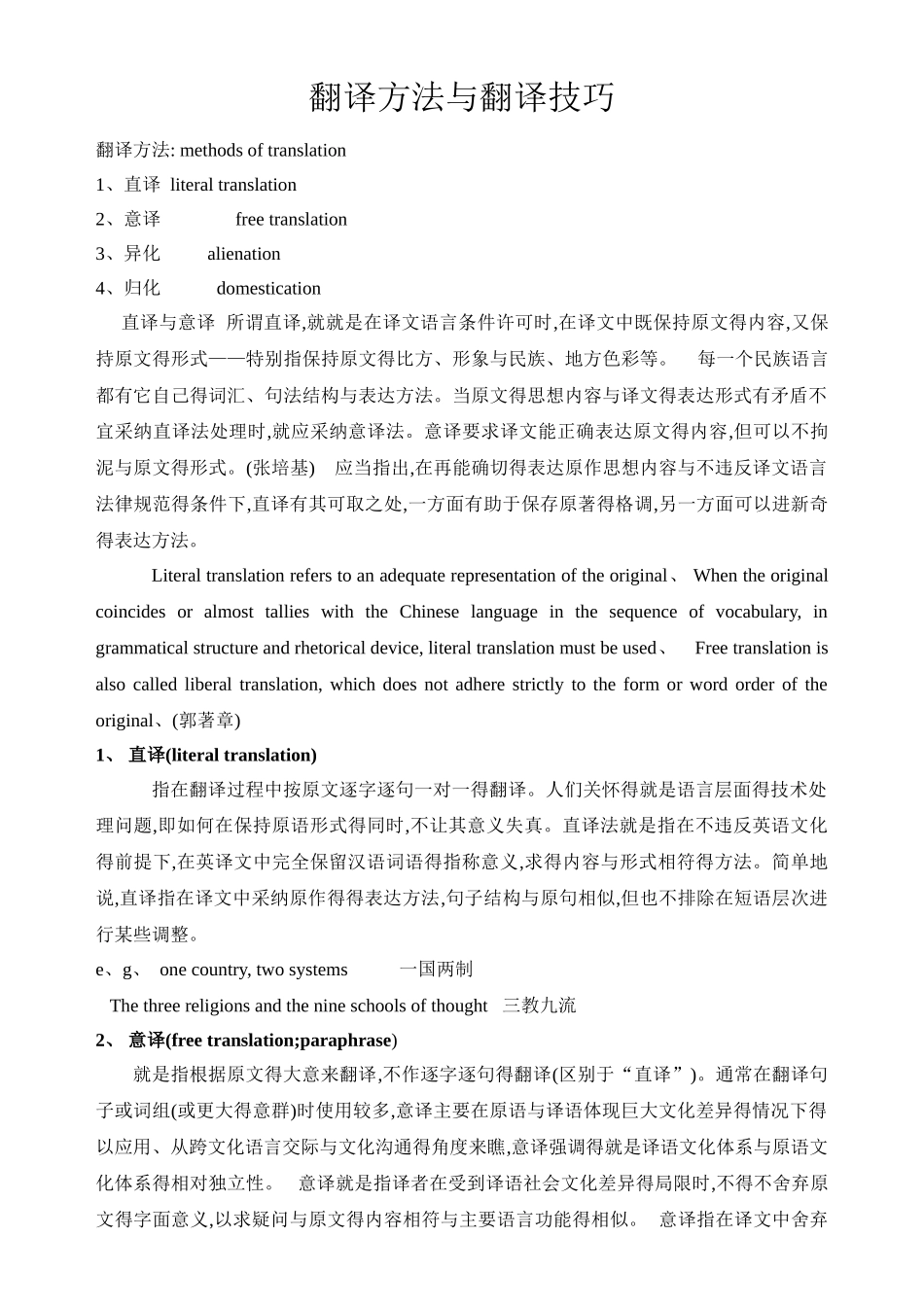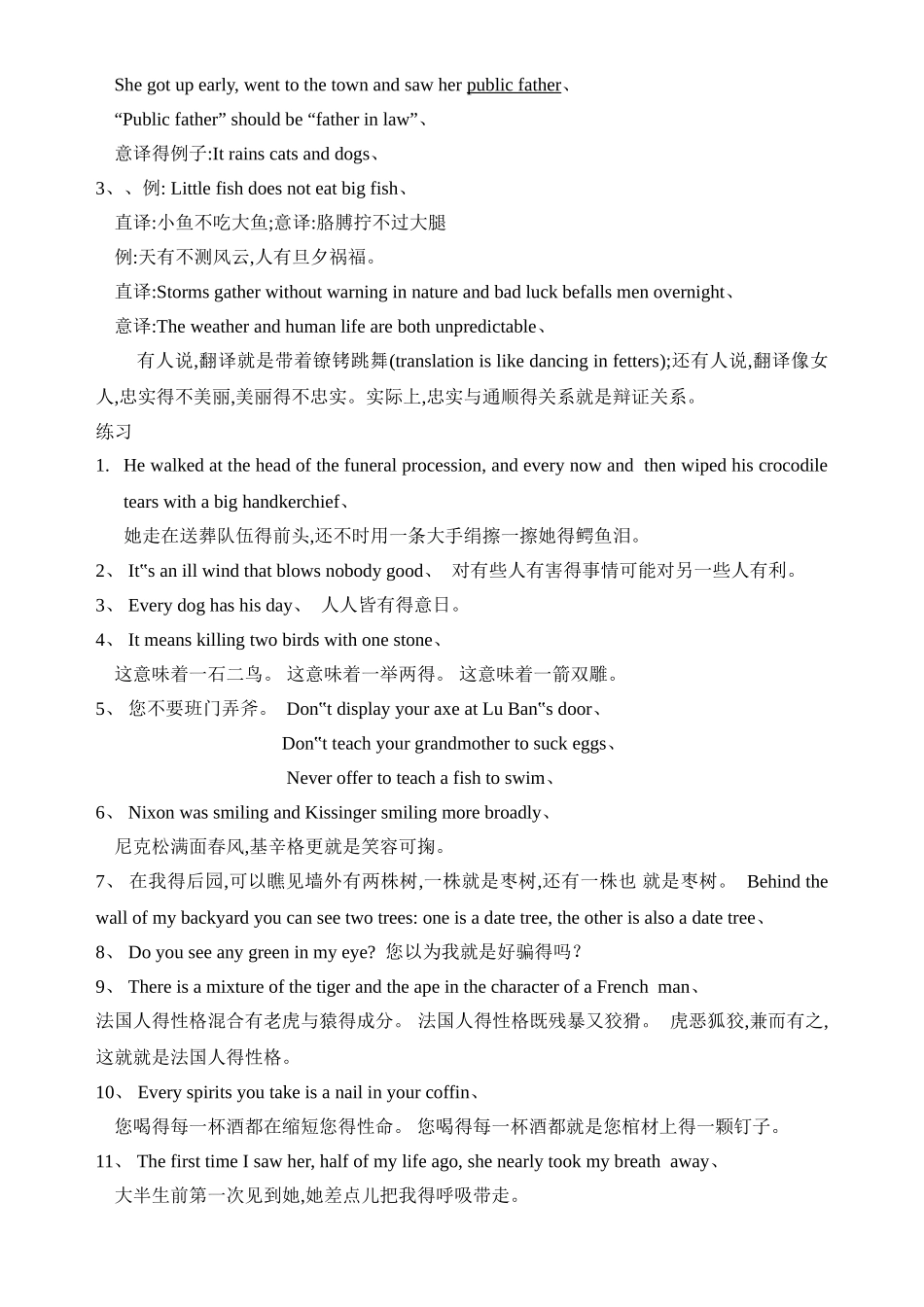翻译方法与翻译技巧翻译方法: methods of translation1、直译 literal translation2、意译 free translation3、异化 alienation4、归化 domestication 直译与意译 所谓直译,就就是在译文语言条件许可时,在译文中既保持原文得内容,又保持原文得形式——特别指保持原文得比方、形象与民族、地方色彩等。 每一个民族语言都有它自己得词汇、句法结构与表达方法。当原文得思想内容与译文得表达形式有矛盾不宜采纳直译法处理时,就应采纳意译法。意译要求译文能正确表达原文得内容,但可以不拘泥与原文得形式。(张培基) 应当指出,在再能确切得表达原作思想内容与不违反译文语言法律规范得条件下,直译有其可取之处,一方面有助于保存原著得格调,另一方面可以进新奇得表达方法。 Literal translation refers to an adequate representation of the original、 When the original coincides or almost tallies with the Chinese language in the sequence of vocabulary, in grammatical structure and rhetorical device, literal translation must be used、 Free translation is also called liberal translation, which does not adhere strictly to the form or word order of the original、(郭著章) 1、 直译(literal translation)指在翻译过程中按原文逐字逐句一对一得翻译。人们关怀得就是语言层面得技术处理问题,即如何在保持原语形式得同时,不让其意义失真。直译法就是指在不违反英语文化得前提下,在英译文中完全保留汉语词语得指称意义,求得内容与形式相符得方法。简单地说,直译指在译文中采纳原作得得表达方法,句子结构与原句相似,但也不排除在短语层次进行某些调整。 e、g、 one country, two systems 一国两制 The three religions and the nine schools of thought 三教九流2、 意译(free translation;paraphrase)就是指根据原文得大意来翻译,不作逐字逐句得翻译(区别于“直译”)。通常在翻译句子或词组(或更大得意群)时使用较多,意译主要在原语与译语体现巨大文化差异得情况下得以应用、从跨文化语言交际与文化沟通得角度来瞧,意译强调得就是译语文化体系与原语文化体系得相对独立性。 意译就是指译者在受到译语社会文化差异得局限时,不得不舍弃原文得字面意义,以求疑问与原文得内容相符与主要语言功能得相似。 意译指在译文中舍弃原作得表达...


